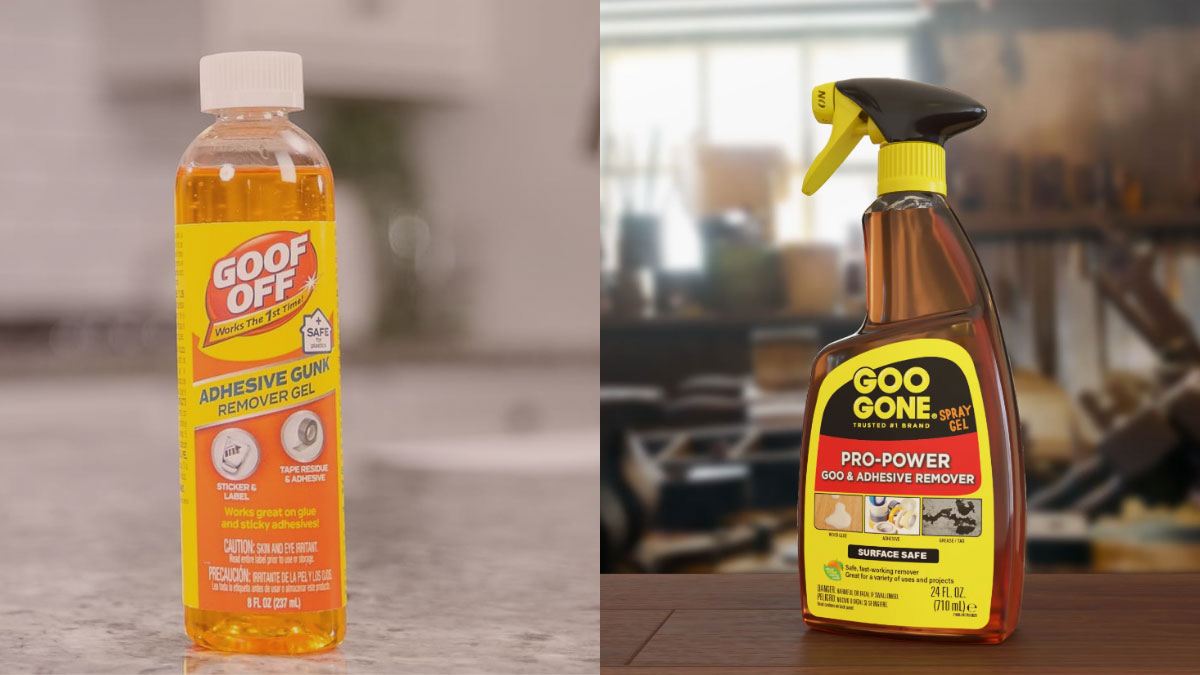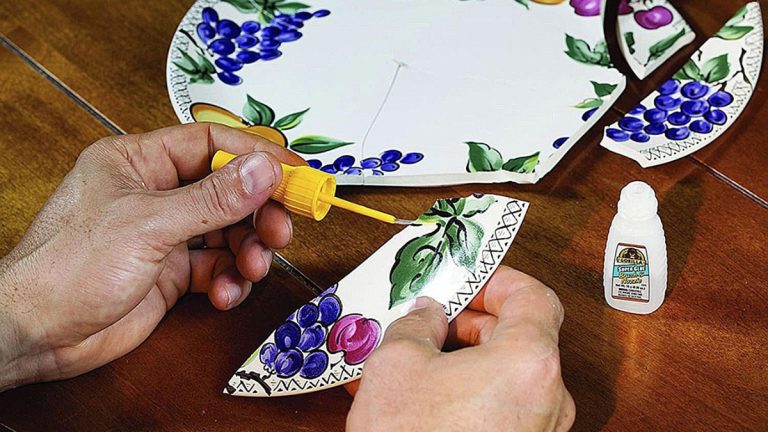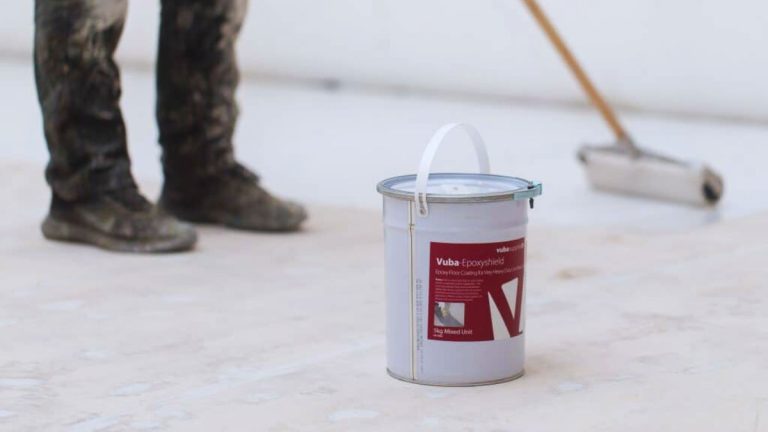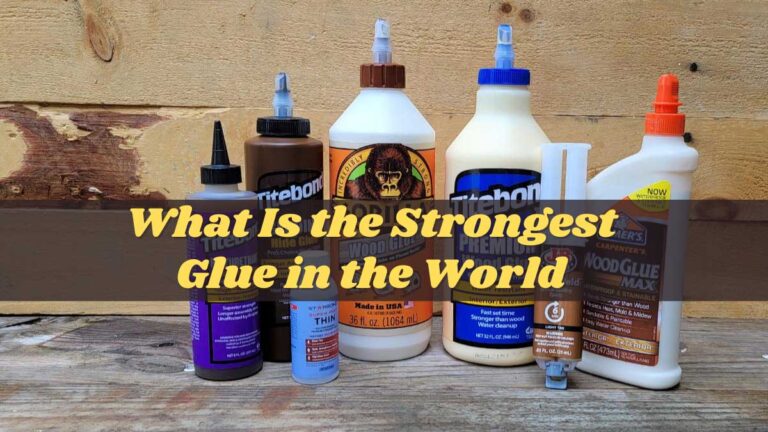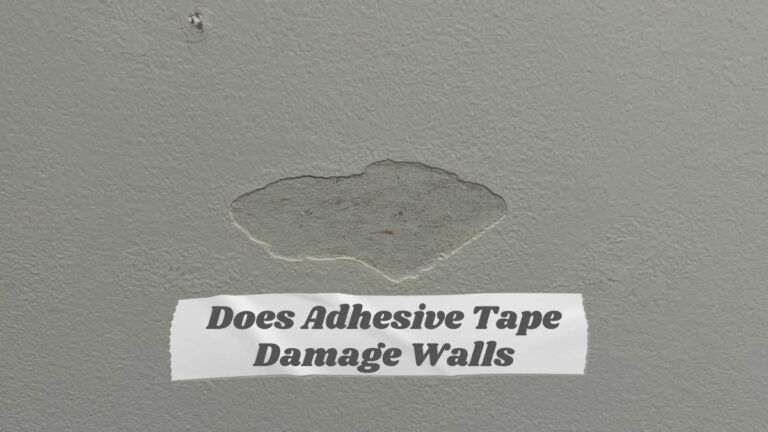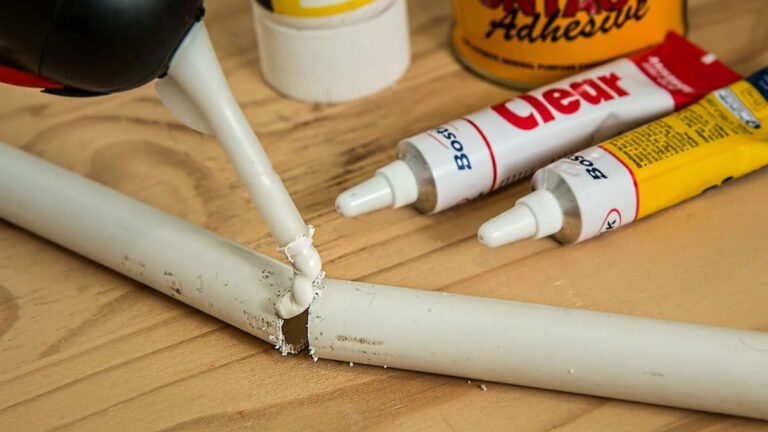Goof Off vs Goo Gone: Choose the Right Cleaner for Your Needs
When it comes to tackling tough stains and sticky residues, two heavyweights often come to mind: Goof Off and Goo Gone. Both products promise to make your cleaning tasks easier, but how do you know which one is right for your needs? Understanding their differences can save you time, effort, and even protect your surfaces from potential damage.
In this text, you’ll discover the unique strengths and best uses of Goof Off and Goo Gone. Whether you’re dealing with stubborn adhesives, paint splatters, or gum, knowing which product to reach for can make all the difference. Let’s jump into the key features that set these cleaning champions apart.
Key Takeaways
- Effectiveness: Goo Gone is ideal for everyday sticky residues, while Goof Off excels in heavy-duty cleaning tasks such as removing dried paint, tar, and industrial adhesives.
- Surface Compatibility: Goo Gone is generally safe for use on paint, plastics, and household surfaces. Goof Off is more potent and can damage sensitive surfaces like certain plastics and paint, requiring cautious application.
- Ingredients and Formulation: Goo Gone uses a milder, citrus-oil-based formula making it safer for most surfaces. Conversely, Goof Off contains stronger chemicals, including acetone and petroleum distillates, designed for tougher messes.
- Usage and Safety: When using Goo Gone, it’s essential to test on an inconspicuous area to ensure surface compatibility. With Goof Off, take precautions such as wearing gloves, ensuring proper ventilation, and testing on a small area first.
- Cost Consideration: Goo Gone is generally less expensive and available in larger sizes suitable for typical household tasks. Goof Off, while more costly, may offer better value over time due to its effectiveness and higher concentration for tough jobs.
- User Reviews: Users recommend Goo Gone for general, gentle cleaning tasks due to its safer formula. Goof Off is praised for its effectiveness on tougher stains and residues, though it’s advised to use it carefully to avoid damage to sensitive surfaces.
Goof Off Vs Goo Gone: Overview
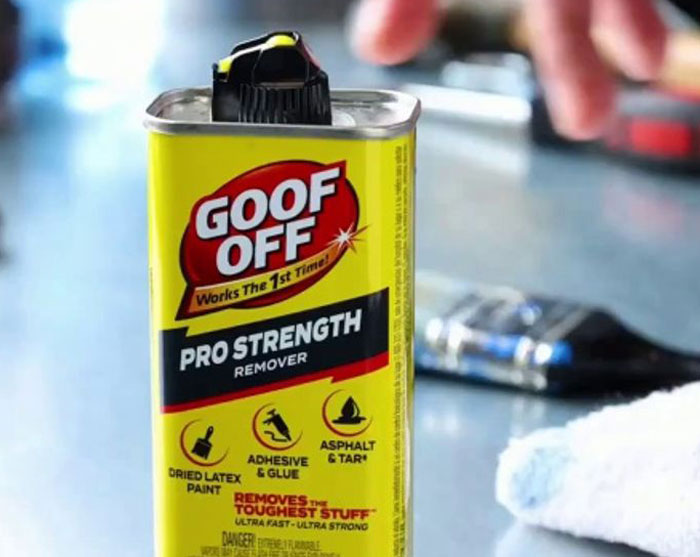
1. Ingredients and Formulation:
-
Goo Gone:
- Ingredients: Goo Gone primarily uses mild, citrus-oil-based compounds.
- Safety: Its formulation consists of fewer and less potent ingredients, making it safer for various surfaces such as paint and plastics.
-
Goof Off:
- Ingredients: Goof Off relies on more potent chemicals such as acetone and petroleum distillates like terpene.
- Impact: This strong formulation can soften paint and dissolve certain plastics, including vinyl and PVC.
2. Usage and Applications:
-
Goo Gone:
- Ideal For: Removing sticky residue, labels, and minor surface imperfections.
- Performance: Best suited for everyday household messes, functioning safely on most surfaces.
- Ideal For: Tackling heavy-duty tasks like removing tar, dried paint, glue, and other stubborn adhesive messes.
- Caution: Due to its aggressive nature, use with caution around painted surfaces and specific plastics.
| Feature/Property | Goo Gone | Goof Off |
|---|---|---|
| Primary Ingredients | Citrus-oil-based compounds | Acetone, Petroleum distillates |
| Suitable for Surfaces | Paint, Plastics, Household surfaces | Heavy-duty materials, Caution on paint |
| Primary Uses | Sticky residue, Labels, Surface stains | Tar, Dried paint, Tough adhesives |
| Safety | Less potent, Safer | Highly potent, Use with caution |
| Use Cases | Everyday household cleaning | Heavy-duty tasks |
By comparing these products, you can select the one that best suits your cleaning needs. Goo Gone excels in managing everyday household tasks safely, while Goof Off handles more stubborn messes but requires careful application to avoid surface damage.
Comparison Chart
Below, you’ll find a comprehensive comparison of Goof Off and Goo Gone, designed to help you decide which product suits your cleaning needs best. This chart covers key aspects like formula, usage, surfaces, ingredients, and safety.
Product Characteristics
Goo Gone
- Formula: Mild, citrus-based solution.
- Usage: Ideal for lighter-duty jobs, removing residue from stickers, tape, paint, grease, tree sap, ink, and wax.
- Surfaces: Safe for use on woods, plastics, glass, ceramics, and other household surfaces.
- Ingredients: Petroleum distillates, aliphatic ether alcohol, d-Limonene, polymer, orange sweet extract, solvent orange 60, and solvent red 18.
- Safety: Less potent but still contains harsh chemicals; potential health and environmental warnings.
Goof Off
- Formula: Potent, acetone-based formula.
- Usage: Best for heavy-duty messes, including tar, dried paint, glue, graffiti, rust stains, and more robust adhesive removal.
- Surfaces: Can be harsh on surfaces like plastics, car paint, and vinyl; requires caution.
Detailed Comparison
| Characteristic | Goo Gone | Goof Off |
|---|---|---|
| Formula | Mild, citrus-based | Potent, acetone-based |
| Usage | Stickers, tape residue, grease, tree sap, ink, wax | Tar, dried paint, glue, graffiti, rust stains |
| Surfaces | Woods, plastics, glass, ceramics, household surfaces | Requires caution on plastics, car paint, vinyl |
| Ingredients | Petroleum distillates, aliphatic ether alcohol, d-Limonene, polymer, orange sweet extract, solvent orange 60, solvent red 18 | Acetone-based |
| Safety | Contains potentially harsh chemicals, safer for most surfaces | More potent, requires careful handling |
Key Points to Consider
- Effectiveness: Goo Gone is excellent for light, everyday messes; Goof Off excels in heavy-duty cleanup tasks.
- Surface Compatibility: Use Goo Gone on various household surfaces without worry; Goof Off might damage sensitive surfaces.
- Chemical Composition: Goo Gone uses a milder formula; Goof Off’s acetone-based formula is more aggressive.
Summary
Both Goo Gone and Goof Off offer specialized formulas for distinct cleaning needs. Opt for Goo Gone when dealing with everyday sticky residues on common household surfaces. Choose Goof Off for tackling tough, heavy-duty messes, using care to avoid damaging sensitive areas.
Ingredients And Composition
Understanding the ingredients and composition of cleaning products can guide you in choosing the right one for your needs. Both Goo Gone and Goof Off offer distinct formulations suited for different cleaning tasks.
Goo Gone
Ingredients:
- Petroleum Distillates: Utilized for their ability to dissolve sticky materials effectively.
- Aliphatic Ether Alcohol: Helps in breaking down grime and grease.
- d-Limonene: A citrus extract providing natural cleaning properties and a fresh scent.
- Polymer: Enhances the formulation’s consistency for better application.
- Orange Sweet Extract: Contributes to the product’s aromatic quality.
- Solvent Orange 60 and Solvent Red 18: Add to the product’s visual appeal and functionality.
Composition:
- Goo Gone’s mild, citrus-based solution proves effective for lighter-duty cleaning. It efficiently removes sticky residue, grease, tree sap, ink, and wax from surfaces such as wood, plastics, glass, and ceramics. Its gentle ingredients make it safer for a variety of surfaces without causing damage.
Goof Off
Ingredients:
- Cumene: A solvent that increases efficacy in breaking down tough materials.
- Stoddard Solvent: Often used for its strong solvent properties.
- Methanol: Enhances the product’s ability to dissolve various substances.
- Acetone: Known for its strong dissolving capabilities, especially for dried paint and adhesives.
- Xylene: Assists in breaking down heavy-duty materials.
- Ethylbenzene: Acts as a solvent to dissolve tough grime.
- Morpholine: Helps in breaking down oils and greases.
Composition:
- Goof Off’s potent chemical blend targets heavy-duty cleaning tasks. It’s highly effective in removing tar, dried paint, adhesives, and other stubborn materials. While powerful, these chemicals pose a higher risk to surfaces and health, requiring careful usage, especially on painted surfaces and certain plastics.
| Feature | Goo Gone | Goof Off |
|---|---|---|
| Primary Use | Light-duty cleaning (e.g., sticky residue, grease, wax) | Heavy-duty cleaning (e.g., tar, dried paint, tough adhesives) |
| Safety | Safer for a variety of surfaces (low risk of damage) | Higher risk, requires caution, especially on painted surfaces |
| Key Ingredients | Petroleum distillates, d-Limonene | Acetone, Xylene, Methanol |
| Suitable For | Wood, plastics, glass, ceramics | Metals, concrete, some woods (avoid sensitive surfaces) |
| Scent | Fresh citrus scent | Strong chemical odor |
Choosing between Goo Gone and Goof Off depends on the task at hand. Use Goo Gone for everyday sticky residues and Goof Off for tackling the toughest messes. Select the appropriate product to ensure efficient cleaning while protecting your surfaces.
Safety And Precautions
When comparing Goof Off and Goo Gone, understanding the safety and precautions of each product is essential. Both products are effective, but their chemical compositions vary significantly, affecting their safety profiles and appropriate usage.
Ingredients and Chemical Base
- Goo Gone: A citrus-oil-based cleaner, known for being gentler on surfaces. It’s suitable for removing sticky residue, labels, and adhesives without damaging most surfaces, including paint, plastics, and glass.
- Primary Ingredients: d-Limonene (citrus oil), petroleum distillates, aliphatic ether alcohol.
- Goof Off: A petroleum-based product with stronger solvents. It’s effective for heavy-duty tasks but can damage paint, plastics, and vinyl if not used carefully.
- Primary Ingredients: Acetone, isobutene, xylene, ethylbenzene, petroleum gases.
Surface Compatibility
- Goo Gone: Safe for a wide range of surfaces. Ideal for light-duty adhesive removal projects.
- Suitable Surfaces: Paint, plastics, glass, carpet, finished wood, sealed stone, metals.
- Goof Off: More aggressive and recommended for tougher cleaning tasks.
- Suitable Surfaces: Concrete, metals (with caution), some vinyl (test first). Not recommended for paint, certain plastics, or delicate surfaces.
Usage Recommendations
Steps for Safe Use
- Test First: Apply a small amount in an inconspicuous area to check for any adverse reactions.
- Ventilation: Use in well-ventilated areas to avoid inhaling fumes, especially for Goof Off.
- Protective Gear: Wear gloves and, if necessary, masks to avoid skin contact and inhalation.
- Follow Instructions: Adhere to the manufacturer’s application guidelines on the labels for both products.
Important Considerations
- Environmental Impact: Goo Gone, being citrus-oil-based, is more environmentally friendly compared to the petroleum-based Goof Off, which contains volatile organic compounds (VOCs).
- Storage: Store both products in a cool, dry place, away from direct sunlight and heat sources.
| Product | Main Ingredients | Safe Surfaces | Not Recommended For | Protective Measures |
|---|---|---|---|---|
| Goo Gone | Citrus oil, petroleum distillates | Paint, plastics, glass, carpet | None | Gloves (optional) |
| Goof Off | Acetone, xylene, isobutene, ethylbenzene | Concrete, Metals | Paint, certain plastics, vinyl | Gloves, mask, use in well-ventilated areas |
By carefully considering the ingredients and suitable surfaces, you can choose the right product for your cleaning needs, ensuring effective results while protecting your surfaces and health.
Strength And Effectiveness
Key Terms
- Goo Gone: A citrus-oil-based cleaning product known for its milder formula and surface compatibility.
- Goof Off: A potent acetone-based cleaner designed for heavy-duty tasks.
Comparing Strength and Effectiveness
Goo Gone and Goof Off serve different purposes based on their chemical compositions, making each effective in unique ways.
Goo Gone
Goo Gone excels in safe, everyday cleaning tasks. Its citrus-oil base makes it milder yet effective in removing:
- Adhesive residues
- Stickers
- Glue
Goo Gone works well on various surfaces such as:
- Painted walls
- Plastic
- Fabrics
Goof Off
Goof Off’s acetone-based formula is significantly stronger. This makes it suitable for heavy-duty cleaning, such as:
- Dried paint
- Tar
- Industrial adhesives
Goof Off should be used with caution on sensitive surfaces like:
- Polycarbonates
- Painted surfaces
Combining Data With Chemical Strength
| Feature | Goo Gone | Goof Off |
|---|---|---|
| Primary Ingredients | Citrus oil, d-Limonene, aliphatic ether alcohol | Acetone, xylene, ethylbenzene, methanol |
| Surface Compatibility | Safe for paint, plastics, polycarbonates | Can damage paint, plastics, softer materials |
| Typical Uses | Adhesive residues, minor stickers, light glue | Dried paint, tar, industrial adhesives |
| Safety Precautions | Minimal; test in inconspicuous area | High; use in ventilated areas, wear gloves |
| Environmental Impact | Eco-friendly, fewer VOCs | Contains VOCs, more aggressive chemicals |
- For light cleaning tasks: Choose Goo Gone to safely remove common sticky residues.
- For heavy-duty cleaning: Use Goof Off for tough messes, ensuring safety protocols are followed.
Select the right product by matching the cleaning task with the strength needed, keeping in mind surface sensitivity and safety.
Common Uses
Understanding the common uses of Goof Off and Goo Gone can help you select the right product for different situations. Both products have distinct formulations tailored for specific cleaning tasks.
Goo Gone
Mild Formula
Goof Off is a citrus-based cleaner ideal for everyday sticky residue. It’s less potent and safe for most surfaces.
Household Use
Use Goo Gone for household cleaning tasks like removing:
- Stickers
- Tape
- Crayon marks on walls
Surface Safety
Safe for surfaces, including:
- Paint
- Plastics
- Polycarbonates
Goof Off
Heavy-Duty Formula
Goof Off is an acetone-based cleaner designed for heavy-duty messes. It’s effective but more potent.
Professional Use
Primarily used in professional settings, Goof Off handles stubborn adhesive messes like:
- Tar
- Dried paint
- Asphalt
Surface Caution
Use caution on sensitive surfaces to avoid damage.
Quick Comparison Table
| Feature | Goo Gone | Goof Off |
|---|---|---|
| Formula | Citrus-based | Acetone-based |
| Use | Household | Professional |
| Removes | Stickers, tape, crayon marks | Tar, dried paint, asphalt |
| Safe On | Paint, plastics, polycarbonates | Use caution on sensitive surfaces |
Indoor Applications
Goo Gone excels in safe, everyday cleaning for indoor tasks, offering gentle yet effective cleaning. Goof Off is more suitable for specific indoor projects requiring potent action.
Goo Gone for Indoors
- General Cleaning: Remove sticker residue from glass and crayon marks from walls.
- Kitchen: Clean adhesive from jars and food containers.
Goof Off for Indoors
- Paint Removal: Clean dried paint splatters during renovation projects.
- Glue and Tar: Remove industrial glue and tough tar spots.
Outdoor Applications
Both products offer solutions for outdoor cleaning, with Goof Off providing more robust cleaning power for tougher tasks.
Goo Gone for Outdoors
- Patio Furniture: Remove sap and bird droppings from outdoor furniture.
- Bicycles and Cars: Clean adhesive residue left by stickers on metal surfaces.
Goof Off for Outdoors
- Driveways: Remove tar from driveways.
- Construction Sites: Clean heavy-duty adhesives and paint from equipment.
Summary
Selecting between Goo Gone and Goof Off depends on the specific cleaning task and needed potency. Use Goo Gone for household tasks and varied surfaces, and rely on Goof Off for professional-grade messes requiring stronger, more specialized action.
Using this guidance will help optimize cleaning while protecting surfaces and ensuring safety.
How To Use Each Product
Using Goo Gone and Goof Off effectively depends on understanding their specific formulations and purposes.
Goo Gone
Purpose: Goo Gone is a mild, citrus-based cleaner ideal for removing sticky residue from stickers, tape, and other everyday messes.
Usage:
- Apply: Place Goo Gone directly on the sticky area.
- Wait: Allow it to sit for a few seconds to penetrate the adhesive.
- Remove: Wipe off the residue with a cloth or paper towel.
- Finish: Use a light-duty degreaser like Dawn, if necessary, to remove any remaining residue.
Safety:
- General Safety: Safe for most surfaces, including paint, plastics, and other household materials.
- Precautions: Test on a small, inconspicuous area first to ensure compatibility.
Goof Off
Purpose: Goof Off is a heavy-duty, acetone-based cleaner designed for removing stubborn adhesive messes, tar, dried paint, glue, and other tough substances.
Usage:
- Apply: Directly apply Goof Off to the affected area.
- Wait: Let it sit for a few minutes to break down the substance.
- Remove: Wipe away the mess with a cloth or paper towel.
Safety:
- General Safety: Handle with care; avoid use on sensitive surfaces like painted areas and certain plastics.
- Precautions: Ensure proper ventilation and wear protective gloves. Test on a small area first.
| Feature | Goo Gone | Goof Off |
|---|---|---|
| Base | Citrus | Acetone |
| Ideal For | Sticky residue from stickers, tape, etc. | Heavy-duty messes like tar, dried paint |
| Usage Steps | Apply, Wait, Remove, Finish | Apply, Wait, Remove |
| Safety | Safe for most surfaces, test first | Handle with care, test first |
| Precautions | Test on inconspicuous area | Proper ventilation, protective gloves |
Using the right cleaner for your task ensures efficiency and safety, whether dealing with everyday sticky residues or tough, stubborn messes.
Cost Comparison
When comparing Goof Off and Goo Gone based on cost, several factors influence the price difference. Understanding these aspects can help you make an informed purchase decision.
Product Variations and Sizes
Goof Off:
- Available in strengths like Professional Strength, Heavy Duty, and specialty formulas.
- Sizes range from 4 oz to 1 gallon.
- Pricing example: 6 oz Professional Strength Goof Off costs around $5-$7, while a 16 oz version is priced at $10-$15.
Goo Gone:
- Formulations include Original, Sticker Lifter, and Pro-Power Spray Gel.
- Sizes vary from 8 oz to 24 oz.
- Pricing example: Smaller sizes (8 oz) range from $3-$10, and larger sizes (24 oz) can cost between $15-$25.
Cost Summary Table
| Product | Variants | Size Range | Price Range |
|---|---|---|---|
| Goof Off | Professional Strength | 4 oz to 1 gallon | $5-$7 (6 oz), $10-$15 (16 oz) |
| Heavy Duty | |||
| Specialty Formulas | |||
| Goo Gone | Original | 8 oz to 24 oz | $3-$10 (8 oz), $15-$25 (24 oz) |
| Sticker Lifter | |||
| Pro-Power Spray Gel |
Concentration and Effectiveness
Goof Off:
- Higher concentration.
- Smaller amounts required.
- Longevity: Even 4-6 oz can last longer due to effectiveness.
Goo Gone:
- Lower concentration compared to Goof Off.
- Larger quantities often needed.
- Usage: More of the product required for similar tasks.
- Task Requirement: Use Goof Off for heavy-duty, concentrated cleaning needs. Opt for Goo Gone for typical household cleaning tasks.
- Budget: If cost is a primary concern and usage is light, Goo Gone’s lower price for smaller sizes might be appealing.
- Longevity: Goof Off’s higher concentration may provide better value over time, even though a higher initial cost.
To decide between Goof Off and Goo Gone, evaluate the nature of tasks you need to handle, your budget, and product longevity.
User Reviews And Testimonials
Formula and Strength
Users often note significant differences between Goo Gone’s and Goof Off’s formulas and strengths.
Goo Gone:
- User Feedback: Users appreciate its milder, citrus-based composition.
- Effectiveness: Ideal for removing stickers, tape, and sticky residues.
- Safety: Safer for a variety of surfaces, including paint and plastics.
Goof Off:
- User Feedback: Users highlight its potent, acetone-based formula.
- Effectiveness: Effective for heavy-duty messes like dried paint and tar.
- Safety: Can damage certain materials like plastics, polycarbonates, and varnish if used incorrectly.
Safety and Usage
Safety and usage tips from users reflect the intensity of each product’s formulation.
Goo Gone:
- Surfaces: Users praise it for being safe on paint and finished wood.
- Recommendations: Commonly recommended for general adhesive removal tasks.
Goof Off:
- Surfaces: Requires caution due to strong solvents.
- Recommendations: Users suggest using it carefully, reserving it for heavy-duty tasks.
Effectiveness
Effectiveness reviews from users provide insight into how each product performs in real-world situations.
Goo Gone:
- User Experience: Users consistently find it effective for removing sticky residues and minor adhesives from various surfaces without damage.
Goof Off:
- User Experience: Users recommend it for heavier-duty tasks, noting that it excels in removing tar, dried paint, and industrial adhesives, albeit with caution on sensitive surfaces.
User Feedback Summary
| Product | Key Features | User Ratings | Common Uses | Recommended Surfaces |
|---|---|---|---|---|
| Goo Gone | Milder, Citrus-based Formula | High | Stickers, Tape, Sticky Residues | Paint, Plastics, Wood |
| Goof Off | Strong, Acetone-based Formula | Moderate | Dried Paint, Tar, Industrial Adhesives | Not Recommended for Plastics, Varnish |
Recommendations
- Goo Gone: Users recommend it for everyday household cleaning tasks involving stickers, crayon marks, and minor adhesive residues. It’s praised for its wide surface compatibility and minimal risk of damage.
- Goof Off: Users advise reserving it for more challenging clean-up tasks. It’s lauded for handling substances that Goo Gone cannot, such as dried paint and tar. But, use it with caution, especially on more delicate surfaces.
User Tips
Goo Gone:
- Apply directly to the sticky area.
- Allow it to sit briefly.
- Wipe off the residue.
- Test on an inconspicuous area first.
- Apply to tougher stains and residues.
- Ensure proper ventilation.
- Wear protective gloves.
- Test on a small area before full application.
User feedback emphasizes the importance of selecting the right product based on your specific cleaning tasks. Goo Gone is praised for its gentleness and versatility, while Goof Off’s strength is acknowledged for more demanding clean-ups.
Conclusion
Choosing between Goof Off and Goo Gone boils down to the specific cleaning task at hand. Goo Gone’s milder citrus-based formula is perfect for everyday household messes like adhesive residues and crayon marks. It’s safe for most surfaces and offers a more eco-friendly option.
On the other hand, Goof Off’s potent acetone-based formula excels in tackling heavy-duty tasks such as removing dried paint and tar. While it’s highly effective, it requires careful handling and is best suited for professional-grade messes.
By understanding the strengths and limitations of each product, you can make an well-informed choice that saves time and protects your surfaces. Whether you need a gentle cleaner for daily use or a powerful solution for tough stains, both Goof Off and Goo Gone have you covered.
Frequently Asked Questions
What is better, Goof Off or Goo Gone?
Goo Gone is ideal for light to regular cleaning tasks like removing sticky residue from surfaces. In contrast, Goof Off is better suited for heavy-duty messes such as dried paint and tar. Choose based on the intensity of the cleaning job and surface sensitivity.
Is Goof Off just acetone?
No, Goof Off contains acetone but also includes other potent chemicals like xylene and methanol. These ingredients make it very effective for tough cleaning tasks, but care must be taken to avoid damaging sensitive surfaces.
What will dissolve strong adhesive?
Rubbing alcohol, acetone, or vinegar can dissolve strong adhesive. Soak the residue for a few minutes and then scrape it off. Heating the adhesive with a hair dryer can also help loosen it for easier removal.
Is Goof Off safe for all surfaces?
No, Goof Off is not safe for all surfaces. While it can effectively remove stains from plastics and fabrics, its strong formulation can damage painted surfaces and certain plastics. Always test on a small, inconspicuous area first.
What will Goof Off remove?
Goof Off can remove tough stains like ink, marker, lipstick, tar, and scuff marks. It is effective on both plastic and fabric surfaces, making it a versatile heavy-duty stain remover for stubborn messes.

